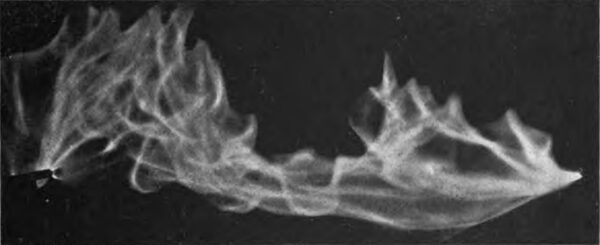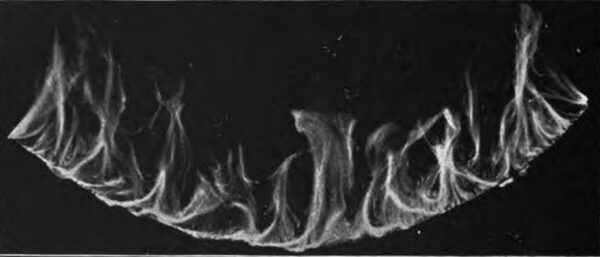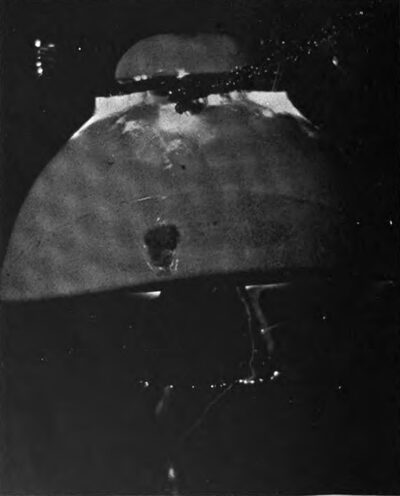[Trade Journal]
Publication: Transactions of the American Institute of Electrical Engineers
New York, NY, United States
vol. 15, no. 1, p. 594-595, col. 1
STEINMETZ ON DIELECTRIC STRENGTH OF AIR
[ See page 327, May issue.]
[COMMUNICATED AFTER ADJOURNMENT BY HAROLD B. Smith.]
The valuable paper of Mr. Steinmetz has to do with work on a subject which has been under investigation during the past year by Messrs. E. B. Paine and H. E. Gough, graduate students under my direction at the Worcester Polytechnic Institute.
Their thesis on “High Potential Discharges in Dielectrics" involved the construction of a 150,000 - volt transformer of 20-K.W. capacity, which is interesting in that with a single transformer a ratio of 1 : 1500 was secured, and the transformer has been operated to potentials above 170,000 volts without failure. The transformer was operated from the secondary circuit of a bank of smaller transformers, the potential of which was varied as desired from a small value to as high as 115 volts. The primaries of the smaller transformers were supplied with current from a 30 K. W. Westinghouse smooth core alternator, giving practically a sine wave of E. M. F. at a frequency of 133 cycles. The accompanying cut shows the construction of this transformer which was immersed in a tank of kerosene oil, preliminary experiments proving the value of this oil under the given conditions.
| |||
| No. 1. -- 150,000 - Volt Transformer. |
The investigation of various dielectrics included a series of tests on the dielectric strength of air, and, while not as complete for this dielectric as those of Mr. Steinmetz, are of value in this connection as they entirely corroborate his results by an entirely independent investigation under nearly the same conditions as to methods of experimentation and apparatus used. There is no occasion to repeat the tabulation of our tests with sharp points and spheres of small radius, as they would add nothing to results given by Mr. Steinmetz further than to add data agreeing almost exactly with that obtained by him.
| |||
| No. 2.--Eighteen Inch Discharge. |
| |||
| No. 3. — Thirty-One Inch Discharge on String. |
Our results show a corresponding constancy and reliability of length of spark gap as a measure of high potentials.
| |||
| No. 4.--The Breaking Down of A High Potential Insulator at 90,000 - Volts, Showing Material Ejected From Point of Rupture. |
A photograph is shown of a discharge between 1/4" spherical terminals 18 inches apart which exhibits the same characteristics as those obtained by Mr. Steinmetz at shorter lengths.(1) This discharge took place at a virtual voltage of 167,000 volts, corresponding to a maximum potential of 236,000 volts, and required at the transformer about fifty horse-power during its existence.
A discharge along a moistened string 31 inches long and the breaking down of a high potential porcelain insulator at 90,000 volts are also shown.
HAROLD B. SMITH.
Worcester Polytechnic Institute, July 6th, 1898.
(1) “Photographic Investigation of a 150,000 Volt Power Discharge." Electrical World, March 5, 1898.




